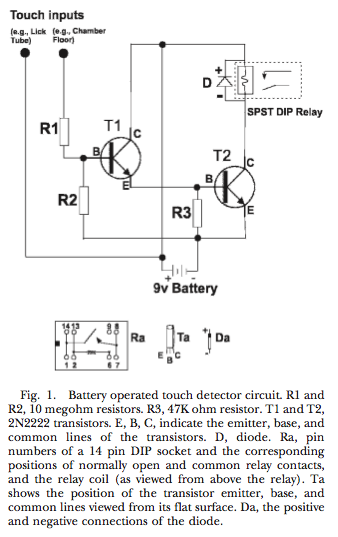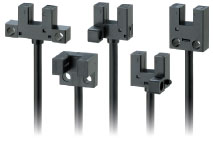Lickometer circuit
Lickometers detect when an animal, usually a rodent, licks a water port. They’re useful in all sorts of behavioral tasks, ranging from addiction experiments (spike the water and see how much they consume), to psychophysics experiments (e.g., GO-NOGO type paradigms). Basically, there is a metal spout that gets licked while the animal stands on a metal floor, and then the animal’s body completes a circuit. The electrical signal gets converted to a TTL pulse which is measured using standard data acquisition devices. These devices are available commercially (e.g., Med Associates), but I recently tested an elegant circuit that you can use to build your own.
Burton Slotnick of the University of South Florida reported this circuit in a 2009 paper. It has several nice features:
- Simple. Very few components.
- Battery-powered. No line noise, portable, fewer wires, safer.
- Flexible. The circuit can be easily modified to accommodate animals of different sizes by changing the resistors.
- Directly outputs TTL-compatible pulses. No conversion necessary.
It can be useful to have a photobeam in the device as well. The animal signals it is ready for stimuli by getting into position: approaching the lick port and breaking the photobeam, without licking. This is even simpler to implement since there are many slotted photoswitches available. For example, Omron has a nice range of slot-type photoswitches– some even include protective circuitry for easy implementation.



[…] covered a simple lickometer circuit previously. Another useful interface is a capacitive touch sensor. In contrast to light gate […]
have you used any of the omron switches? if so, which work well for mice? i ordered one which seems to have a relatively awkward geometry… but otherwise they are idiot-proof…
the 5mm slot switch is too small for headfixed preps. definitely go with the 13mm
[…] saw over on Labrigger that there are some simplified IR LED / Detector pairs from Omron that might simplify the lickometer construction. I will have another post soon about controlling and calibrating the solenoid valve in order to […]